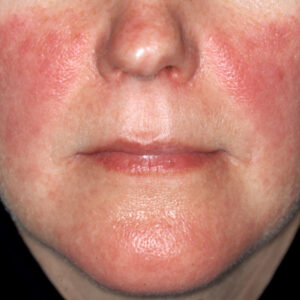Lupus is a chronic autoimmune disease that affects various parts of the body, including the skin, joints, heart, lungs, kidneys, and brain. It can cause inflammation, pain, and damage to these areas, and it can be difficult to diagnose early on. In this article, we will discuss the symptoms of early lupus and the treatments that are available for this condition.
The symptoms of early lupus can vary from person to person and can change over time. Some common early symptoms include fatigue, joint pain and swelling, skin rashes, and fever. A butterfly-shaped rash across the cheeks and nose, known as the “butterfly rash,” is one of the most recognizable symptoms of lupus, although not everyone with lupus will experience it.
Another common symptom of early lupus is photosensitivity, which is an increased sensitivity to sunlight. This can cause skin rashes, pain, and itching when exposed to the sun. Other skin symptoms can include discoloration, ulcers, and other lesions.
Lupus can also affect the joints and cause arthritis, which is inflammation of the joints that can cause pain, stiffness, and difficulty moving. Additionally, lupus can cause pleurisy, which is inflammation of the membrane that surrounds the lungs, and pericarditis, which is inflammation of the membrane surrounding the heart.
Lupus can also affect the kidneys and cause kidney problems, such as nephritis, which is inflammation of the kidneys. Nephritis can cause swelling in the legs, high blood pressure, and protein in the urine.
Fatigue is a common symptom of early lupus and can be severe. People with lupus may feel tired even after a good night’s sleep, and they may have difficulty completing tasks that they used to be able to do easily.
Lupus can also affect the brain and cause problems with memory and concentration, as well as mood swings and depression.
If you are experiencing symptoms of early lupus, it is important to see a doctor as soon as possible. The earlier lupus is diagnosed and treated, the better the outcome for the patient.
The treatment for early lupus can vary depending on the severity of the symptoms and the parts of the body affected. The main goal of treatment is to reduce inflammation and prevent further damage to the body.
The first line of treatment for lupus is often nonsteroidal anti-inflammatory drugs (NSAIDs) such as ibuprofen or naproxen. These drugs can help to relieve pain and reduce inflammation.
In more severe cases, corticosteroids, such as prednisone, may be used to reduce inflammation. Corticosteroids can cause side effects, so they are typically used only for short periods of time.
Another common treatment for lupus is immunosuppressant drugs, which can help to reduce the activity of the immune system and prevent it from attacking healthy tissue. These drugs can have serious side effects, so they are typically used only for people with severe lupus.
In some cases, antimalarial drugs, such as hydroxychloroquine, may be used to treat lupus. These drugs can help to reduce skin rashes and joint pain, as well as prevent flare-ups of lupus.
Lupus can also be treated with physical therapy and exercise, which can help to reduce joint pain and improve mobility. In addition, it is important for people with lupus to protect their skin from the sun and to avoid activities that can trigger lupus symptoms, such as stress.

 Home
Home Health
Health Diet & Nutrition
Diet & Nutrition Living Well
Living Well More
More












